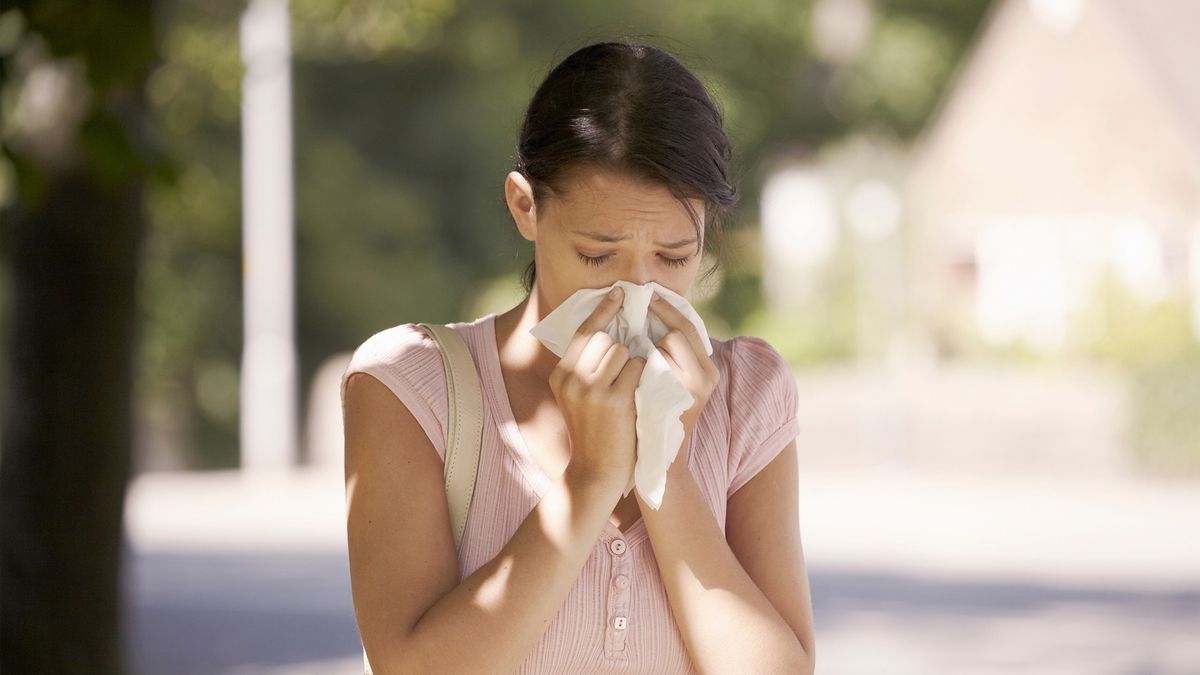Although spring migraine triggers vary from person to person, about 20 percent of migraines are linked to changes in the weather, according to Healthline.
Additionally, in the spring, the increased spread of pollen and mold also leads to allergies including symptoms such as sneezing, nasal congestion, runny nose, watery eyes, itchy eyes/nose/throat, etc. and migraines are more easily triggered in people with spring allergies.
Here are some tips to help you manage migraines in the spring, and, while migraines can't always be prevented, there are things you can keep in mind to help alleviate them.
1. Monitor weather changes
Weather is something that humans cannot control, but understanding the changes in the weather by following forecast boards and observing the living environment will help you prevent this common factor that triggers migraines.
In other words, all weather conditions such as high winds and rainstorms signal changes in atmospheric pressure and can trigger migraines. Detecting the early signs of a migraine can help you treat it before it gets worse.

Managing spring allergies well helps prevent migraines more effectively (Photo: Internet)
2. Allergy management
If you suffer from seasonal allergies, specifically spring allergies:
- Limit time outdoors
Inhaling billions of airborne pollen grains into your nose and lungs can trigger an allergic reaction, so staying indoors is especially helpful when you have allergies, especially on windy, early morning days when pollen counts are typically highest.
If you have to go outside, always wear glasses, a mask, and change clothes and shower as soon as you get home.
- Take allergy medicine
Antihistamines help block the body's allergic reactions in less than an hour. But be aware of the side effects of antihistamines, especially if your job requires you to be really alert and focused.
For people with more severe allergies, nasal sprays may also be a suggestion, but sometimes, the time for nasal sprays to take effect will be slower. In addition, nasal sprays can cause unwanted side effects such as burning nose, dry nose, nosebleeds, so they should be used as directed by a doctor and not used continuously for a long time.
Drinking plenty of water, steaming your nose with warm water, rinsing with salt water, applying warm or cold compresses to reduce sinus discomfort, etc. can also help relieve symptoms of allergic rhinitis at home.
Taking precautions before allergy season starts is also a way to prevent allergy symptoms from occurring faster. Don't forget to clean your home, including cleaning air filters, limiting the amount of time you dry clothes outside when the weather is warmer, etc.
People with spring allergies should see a doctor if the allergy does not improve, affects daily life, causes chronic inflammation causing migraines, difficulty breathing, and persistent cough.
3. Sleep hygiene
In the spring, there is more daylight, which means the sun rises earlier and sets later. This can affect your sleep habits, such as staying up a little later. But in general, anything that prevents you from getting the recommended 7-8 hours of sleep a night can trigger a migraine, and these sleep problems often include:
- Sleep apnea
- Insomnia
- Restless legs syndrome
- Snoring
- Narcolepsy
Migraines can also wake you up or you may feel the pain coming on right after getting out of bed. More than half of migraines occur between 4am and 9am and this may be because they are sleep-related.
One of the best things you can do to prevent migraines in the spring or any other season of the year is to stick to a consistent bedtime and wake-up schedule, including weekends.
Aim for 7-8 hours of sleep per night for adults and eliminate bad bedtime habits like overeating, drinking alcohol or caffeine, watching TV or using your phone right before bed, etc. To get better sleep and fall asleep easier, keep your room dark, cool, and quiet.
For people with migraines, sleep problems sometimes require medical intervention with cognitive therapy, relaxation techniques, supplements if needed, or prescription/over-the-counter medications.
4. Change exercise intensity slowly
In the spring, many people may feel the urge to get back to training more strongly than in the winter months. However, sudden changes in training intensity or high-intensity training can trigger migraines due to over-exertion or dehydration.
So even if you’re eager to get back to working out after a winter break, start slowly so you don’t trigger a migraine. Plus, regular exercise can help prevent migraines.

Sudden increase in physical activity can trigger a migraine (Photo: Internet)
5. Drink enough water
Dehydration is a common cause of migraines, so it’s important to stay hydrated throughout the day, especially if you have spring allergies, as dehydration can make mucus in your airways thicker and more uncomfortable. Plus, spring weather can be unpredictable, with hot and cold spells at times, so sweating and increased dehydration are possible, so staying hydrated is crucial.
Good sources of fluids include water, fruit juice, milk and milk alternatives, and hot or decaf tea, which has had most of the caffeine removed. Be careful with caffeine sources like coffee or tea, as too much caffeine or sudden withdrawal can trigger migraines. If you are used to drinking caffeine every day, it is important to keep it consistent.
Overall, it can be seen that early recognition of symptoms and timely treatment are of utmost importance in managing spring migraines. Always listen to your body, make healthy lifestyle adjustments, and do not hesitate to seek help from medical professionals when necessary.
Source





































































































Comment (0)